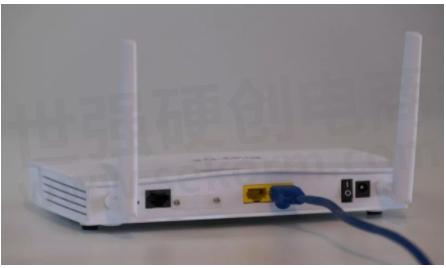The Connection between Router Wi-Fi Module and Wi-Fi Signals Explained

There were times when you could only find Wi-Fi signals at certain places such as airports, coffee houses, shopping malls, or hotels. However, things have changed now! With the advancement in technology, you can now find Wi-Fi signals everywhere thanks to the Router Wi-Fi Module. So, it will not be wrong to say that there is a deep connection between a router and Wi-Fi signals. So, if you want to know more about this connection, then keep reading. Here, SKYLAB will introduce in this article.

What Is Wi-Fi?
Before we dive into complications, let’s first discuss a few basics. Wi-Fi is a wireless network that uses radio waves with the help of a router Wi-Fi module. Its working is the same as the cellphones, radios, and televisions. In fact, the communication between the wireless networks works like a two-way radio communication. Let’s see how it works:
First, the wireless adapter translates data into the form of radio signals and then transmits it with the help of an antenna.
Next, the wireless router receives these signals and then tries to decode them. An important thing to remember here is that the router transmits the information to the internet with the help of a physical Ethernet connection.
The process that we discussed above can work in reverse as well. As the router receives the information from the internet, it translates it into a radio signal and then sends it to the computer’s wireless adapter.
The radios that we use for Wi-Fi communication are extremely similar to the radios that we use for walkie-talkies. These radios are capable of transmitting and receiving radio waves and can easily convert 1s and 0s into radio waves. Not only this, but they can convert the radio waves back into 1s and 0s as well.
Difference between Wi-Fi Radios and Other Radios
Even though the Wi-Fi radios are very similar to the other radios, there are a few noticeable differences between the two devices. Let’s take a look at these differences below.
■ Wi-Fi radios are capable of transmitting at the frequencies of 2.4GHz or 5.0GHz. The frequency is a lot higher than the frequency that we use in the cell-phones, televisions, and walkie-talkies. The higher the frequency of the radio is, the more the signal to carry the data.
■ 2.4GHz connections are now obsolete these days. That’s because their speed of carrying data is extremely lower than the 5.0GHz. The 2.4 band keeps on seeing use, in any case, because the lower recurrence can continue a few hundred feet. In ideal conditions, the 5GHz band has a maximum scope of around 200 feet (61 meters), however in reality; it is substantially more inclined to impedance from dividers, entryways, and different articles. The 2.4 groups might be quicker for a client associating with a switch a few rooms away, while 5 GHz will be quicker for a nearby association.
What are Wi-Fi Hotspots?
A Wi-Fi hotspot is an area that has an accessible wireless network. People use this term most often to refer to a wireless network in a public area such as coffee shops and airports. While some of these networks are completely free, others require a fee for the use. But, no matter whether it is free or you pay for it, it can be extremely handy in case you are on a go. What’s more, you can even create a mobile hotspot of your own by using your cell phone or an external device that you can connect to a cellular network.
Assuming you want to take advantage of public Wi-Fi problem areas or your own locally situated organization, the main thing you'll have to do is ensure your PC has the right stuff. Most new workstations and numerous new PCs accompany work in remote transmitters, and pretty much all cell phones are WiFi empowered. If your PC isn't now prepared, you can purchase a remote connector that plugs into the PC card space or USB port. PCs can utilize USB connectors, or you can purchase a connector that plugs into the PCI opening inside the PC's case. A large number of these connectors can utilize more than 802.11 principles.
After the successful installation of a remote connector and the drivers that permit it to work, your PC ought to have the option to consequently find existing organizations. This implies that when you turn your PC on in a Wi-Fi problem area, the PC will illuminate you that the organization exists and find out if you need to interface with it.
What Is a Router Wi-Fi Module?
Let’s now discuss the router Wi-Fi module. It is a device that helps in the communication between the internet and the devices at your home that you connect to the internet. Just as its name suggests, it “routes” the traffic between the internet and the devices.
When you have the right kind of router at your home, you can enjoy the internet at a faster speed. Not only this, but it helps you protect your family from cyber threats as well. You can even avoid the maddening Wi-Fi dead spots with them.

The Connection between the Router Wi-Fi Module and the Wi-Fi Signals
The working of a router Wi-Fi module is quite straightforward once you get to the basics. We all know that a typical home consists of a range of internet devices such as smartphones, tablets, computers, laptops, and printers. When you have an efficient router at your home, these devices will combine to form a network. The main function of a router in forming this connection is that it directs the incoming and outgoing internet traffic on the network. This is what enables the network to work in a faster and an efficient way.
The information that travels on your home network could be anything. The information can include an email, a movie, a live feed from your baby’s webcam. Each of the information that travels takes up different amounts of bandwidth. So, the router ensures that the information delivers quickly and correctly which is quite a big task in itself. The more devices you add, the more your router will have to work.
What are the Different Types of Router Wi-Fi Module?
When it comes to the router Wi-Fi module, there are two main types of routers available out there. Let’s take a look at the types below.
1. Wireless Routers
A wireless router interfaces straightforwardly to a modem by a link. This permits it to get data from — and communicate data to — the web. The switch then at that point makes and speaks with your home Wi-Fi network utilizing worked-in radio wires. Thus, the entirety of the gadgets on your home organization has web access.
2. Wired Routers
A wired router associates straightforwardly to PCs through wired associations. They generally have a port that interfaces with the modem to speak with the web. Another port — or ports — permits the wired switch to associate with PCs and different gadgets to circulate data.
How Are Routers Different From Modems?
Your devices and a router are not the only main components of the network system of your home. There is a modem too. In fact, without the presence of the modem, you will only have a local network without any access to the internet.
However, some people confuse the modem with a router which should not be the case. The modem is a lot different from the router as its main job is to bring the internet to your home from the service provider. Afterward, it connects to your router and delivers internet connectivity to your entire home network.
During the times when the majority of the internet service was delivered through the telephone lines, modems were used to enable communication between the digital devices present at your home with the analog signals that the telephone lines used. However, with the modern internet connection that we use nowadays, the modem plays a similar role differently.

Factors to Consider While Buying A Router Wi-Fi Module for Strong Wi-Fi Signals
While the majority of the service providers give you a set of a router Wi-Fi module and modem yourself, they might not be the best for your usage. In this case, you should buy one for yourself. So, if you are considering buying a router for your needs, there are a few basic factors that you need to consider. Let’s take a look at these factors below.
1. Wi-Fi Coverage
Wi-Fi signals inside a home to a great extent rely upon the size of the home and the hindrances that keep signals from arriving at their objections. Chimneys, mirrors, and thick dividers are only a couple of normal deterrents that block Wi-Fi signals. Search for a switch that can arrive at the most distant corners of your home. Additionally, search for one that has a cross-section organization to expand the Wi-Fi capacities across the home.
2. Wi-Fi Performance
The router technology has greatly evolved. So, you need to make sure that you buy a router that has updated firmware and uses the latest technology. An example of one such technology is MU-MIMO. The full form of MU-MIMO is multi-user, multiple-input, multiple-output technology. It plays a great role in allowing the Wi-Fi router to communicate with multiple devices at one time. This not only improves the network speed but decreases the wait time as well.
3. Wi-Fi Security
Cybercriminals can enter your home arrange and introduce malware and infections on your gadgets. They work with a weapons store of apparatuses to access your own and monetary data. Having a switch that gives network-level insurance could help secure against cyberattacks at the port of section. Search for a switch that has inherent security highlights, similar to programmed refreshes, gadget isolate, and marked firmware refreshes.
4. Wi-Fi Controls
The router Wi-Fi module is an extremely important part of the connected home. For this reason, you need to ensure whether you can easily control the router that you buy or not. Moreover, it should be easy to install and use as well. Some routers even come with user-friendly apps that allow you to connect with guest networks, have parental controls, put limits on user time, and manage the network. So, whether you are planning to upgrade the existing router or buy a new one, you should get to know all the workings of the device and ensure that it meets your needs.
Some Tips for Improving Your Wi-Fi Signals Strength
If your Wi-Fi router module is getting old, there is a high chance that it will not deliver the same signal strength that it used to deliver before. So, if you are going through this situation, the following tips will help you improve the signal strength of your Wi-Fi.
■ Try to update your router’s firmware or get an updated router for your network connection.
■ You can try splitting devices between multiple networks as well. For example, you can opt for different Wi-Fi routers or a Guest Network option on your existing router.
■ Opt for a mesh network or an extender.
■ Make sure that your security settings are strong so that unwanted devices do not get access.
■ Keep switching between the two Wi-Fi frequency bands. This is only possible in case you have a dual-band router. Otherwise, you cannot avail of this option as the router is only designed to use one of the two.

Final Words
To cut it short, there are many factors that can affect the speed of the Wi-Fi connection at your home. However, the router Wi-Fi module plays a major role in it. So, if you notice the quality of the Wi-Fi signals dropping down, make sure that the router is working properly. If not, then buy a new one. However, make sure that you consider the factors mentioned above before buying a quality router.
- +1 Like
- Add to Favorites
Recommend
- Kxcomtech‘s Wi-Fi 7 RF Front-End Chip Empowers French Telecoms‘s Cutting-Edge Router - Freebox Ultra Wi-Fi 7 Router
- Novus Labs‘ test report on 100 routers shows RS9116 Robust low-power Wi-Fi Interoperability
- Expanding Connectivity Horizons: The Power of Router WiFi Modules
- Why Is a 5G Cellular Router Faster Than a 2.4G Router ?
- Improving Laptop’s Wi-Fi Using USB Wi-Fi Module
- Four of the Hot-selling Router WiFi Modules In 2023
- Neoway Introduced a New Wi-Fi HaLow Module, Which Will Fill the Perennial Vacancy of LPWA IoT Technology
- MeiG Smart Released Wi-Fi 6 Module Adopting Qualcomm‘s Latest Generation QCA6391 Wi-Fi Chipset
This document is provided by Sekorm Platform for VIP exclusive service. The copyright is owned by Sekorm. Without authorization, any medias, websites or individual are not allowed to reprint. When authorizing the reprint, the link of www.sekorm.com must be indicated.





























































































































































































































































































































































































































































































































































































































































































































































































































































































